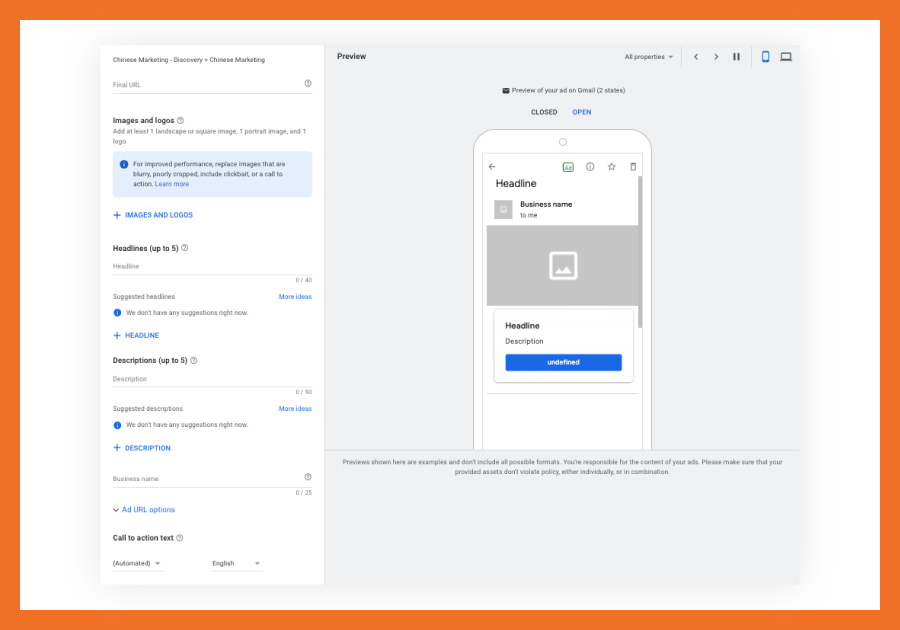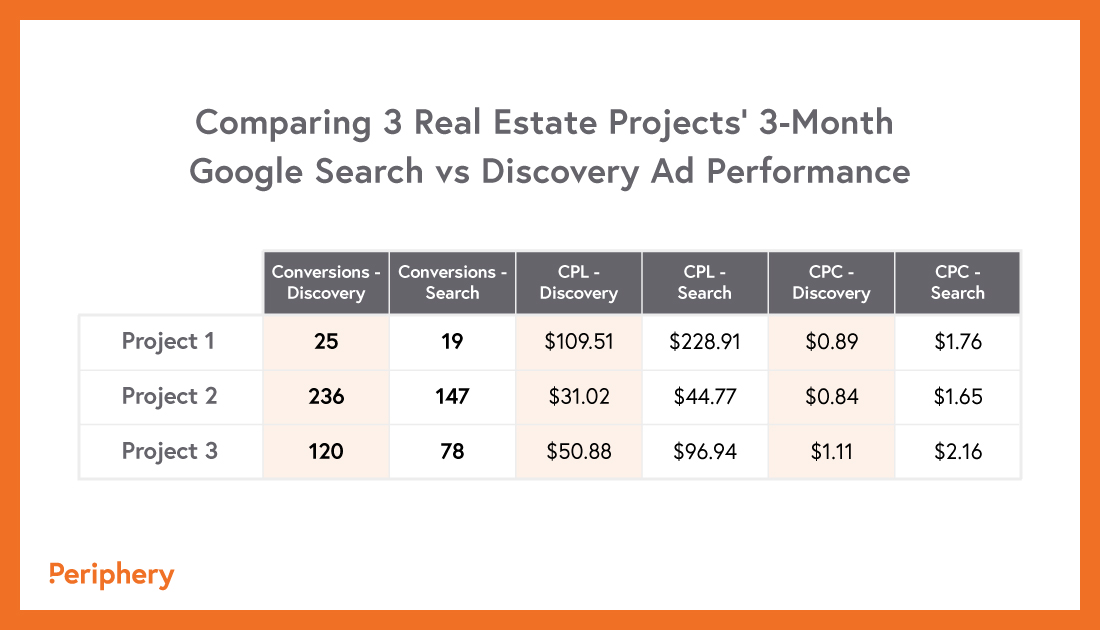If you’re a regular internet user, there’s no less than a 100% chance you’ve seen Google ads on your favorite website or blog. A banner on the top or bottom of a webpage, in the sidebar, at the top of the Google results page, in YouTube videos — ads are everywhere, and each one has a marketer behind it fiercely competing for our attention. Our lives are so bombarded by ads that people are beginning to get something called banner blindness which causes people to gloss over banner ads altogether.
How are companies to combat this?
Enter: native ads. Native ads are ads that, at first glance, look like organic results or content. They resemble the format and function of the platform they appear on.
In late 2019, Google launched a new ad format called Google Discovery Ads. Like other Google Ad formats, it takes advantage of a targeted customer base, but from our experience, can have a higher conversion rate than traditional text Google Search Ads. Some of our clients have been seeing 60% more conversions than their Search campaigns!
What Are Google Discovery Ads?
Discovery Ads are a mobile-optimized, visually-rich ad format that appear in the Google Discover feed, YouTube, and in Gmail. They are charged on a cost per click basis and are composed of either single images or carousels paired with ad copy. You can provide up to 5 headlines and descriptions. Include a landing page link, business name, and call-to-action. You can choose maximize conversions automated bidding and set a target CPA or target ROAS — we’d recommend testing them out to determine what works best for your business goals.
Google Discovery Ads were designed with the goal of driving customer interest and action at scale. Once you upload images and ad copy, Google will pair different combinations and optimize for the best performing ones using machine learning. The great thing about Discovery ads is that they use the “power of intent” to target customers looking for exactly what you are offering.

What Are The Benefits Of Using Google Discovery Ads for Real Estate?
Now that we’ve covered what Discovery Ads are, here is a list of the top three benefits for real estate marketing:
1. Highly Visual and Immersive
Google reports that 86% of online consumers turn to online videos and content for purchase ideas. If you’re considering buying a condo, it goes without saying you’re absolutely going to do online research about it.
You have some beautiful exterior and interior lifestyle renders of your finished condo project. Why not serve them to people in the market for real estate? Google Discovery Ads are a sought-after tool for real estate advertisers looking to reach these high intent audiences.
Real estate developers that include Google Discovery Ads in their marketing campaigns could benefit from a higher ROI and conversion rates than other text-based ads. It makes sense — in the age of customer experience and personalization, people want to be served highly relevant content that sparks inspiration before they go looking for it themselves.
2. Huge reach of high intent audiences
According to Google, Discovery Ads can reach 3 billion people across the globe every month. This claim is by no means unreasonable, given that 1.5 billion people use Gmail, and YouTube is the world’s second-largest search engine. Multi-channel placements = more reach, plain and simple, especially when it comes to Google products.
3. Fully automated & robust targeting
The digital landscape of advertising is changing, and Google has been at the forefront of this revolution.
Coupled with Google’s machine learning algorithms that automatically target in-market audiences, you can target based on the following parameters:
Demographics
Generally with Discovery Ads, you can determine who sees your ads by selecting parameters such as age, gender, parental status, and household income. However, in October 2020, Google released an update to eliminate discriminatory targeting practices for housing ads. While these options are still available on the backend, they will not be approved to run by Google, so ensure you keep this in mind when considering real estate ad targeting.
Geo-targeted audiences
Geo-targeting is segmentation based on location. For example, if you want to target audiences that are closely located to your real estate project. With the October 2020 update outlined above, you cannot target via postal code, but you may target larger areas.
Retargeting audiences
Here, customers are targeted based on their past interactions with your business. If someone checks out your real estate project’s website, you will be able to retarget them with Discovery Ads.
When considering ‘exclusions’, we would recommend excluding prior converters to avoid serving your ads to people who have already filled out a form.

Things to Consider When Launching a Google Discovery Ad Campaign
Discovery Ads are the perfect brand awareness tool for people to explore new real estate opportunities they might not have been aware of.
Here are a few things you should consider on when creating your Discovery campaign:
1. Audience Expansion vs Optimized Targeting
Audience Expansion is a default feature that allows you to show your ads to users that resemble your custom audience, but are outside your manually selected audience. While Google’s machine learning AI is amazing and useful, when used in this way it may drain your budget if your ads are served to irrelevant eyes.
Optimized targeting on the other hand extends to users who are most likely to convert based on real-time conversion data by creating a profile of what a converter looks like outside of manually-selected audience segments.
There is value in knowing your audience and trusting intuition when creating custom audiences, especially if running a campaign with limited funding.
2. Use the carousel feature to tell a story
Carousel ads allow users to scroll through the ad and see all your products in a shorter time than if you were only advertising with one picture at a time. They can tell a holistic story about the lifestyle your buyer could lead while living in your community and allow them to picture themselves there.
3. Use high quality images or renders
When considering how many ads you see on a daily basis (some experts estimate somewhere between 4,000 – 10,000 per day), it’s reasonable to assume your audience will scroll right past low-quality images. Be careful with your selections — ensure they are bright, clear, high resolution, and compelling. Before you launch, ask a friend or colleague to look at your ad and ask them their thoughts.
4. Don’t overpromise
Do not promise what you cannot deliver, end of story. Your customers will feel deceived, and people will remember and voice their experience to their network. No high-quality visuals or compelling copy can make up for that, and even if you try it once because you think you can get away with it, your reputation will already be tarnished for future campaigns.
5. Discovery Ads aren’t the be-all-end-all
While we’re a fan of Discovery Ads, to get the best results possible and as a good rule of thumb you should not be putting all your eggs in one basket. Clients who see the most success pair Discovery campaigns with other campaigns like Search, Display, and Facebook Ads.
Key Takeaway
Google Discovery ads are a relatively new tool that can be instrumental in your real estate marketing campaigns. These highly visual and interactive ads can reach people through Google Discover, Gmail and YouTube home feeds, capitalizing on machine learning algorithms to serve your ads to high-intent audiences.
Book a free consult today to learn more about Discovery Ads and how they could skyrocket the ROI for your project by the experts who know real estate.



